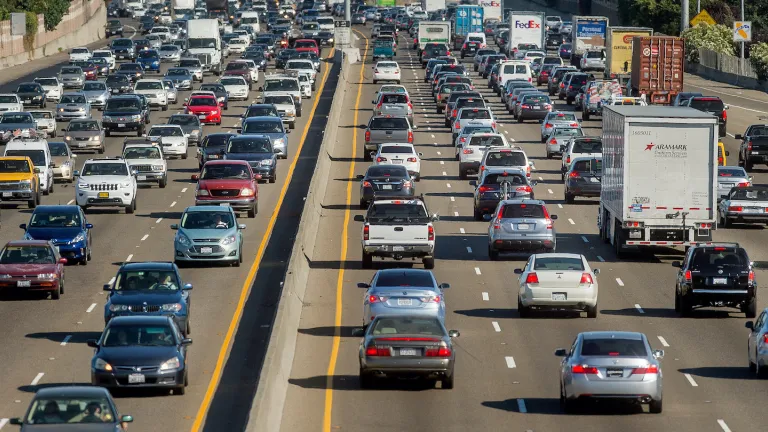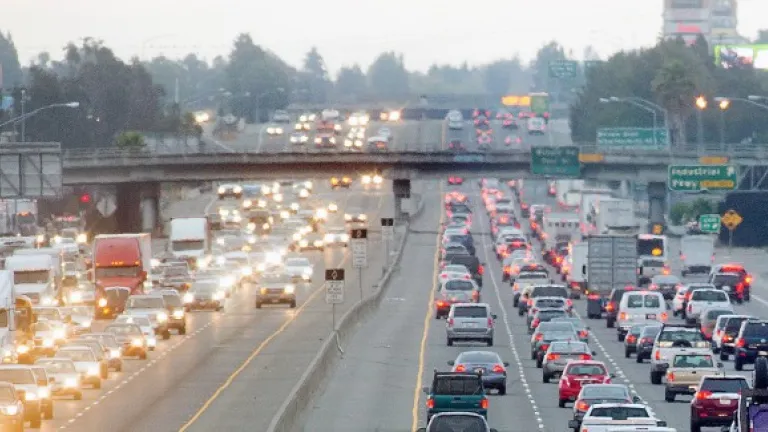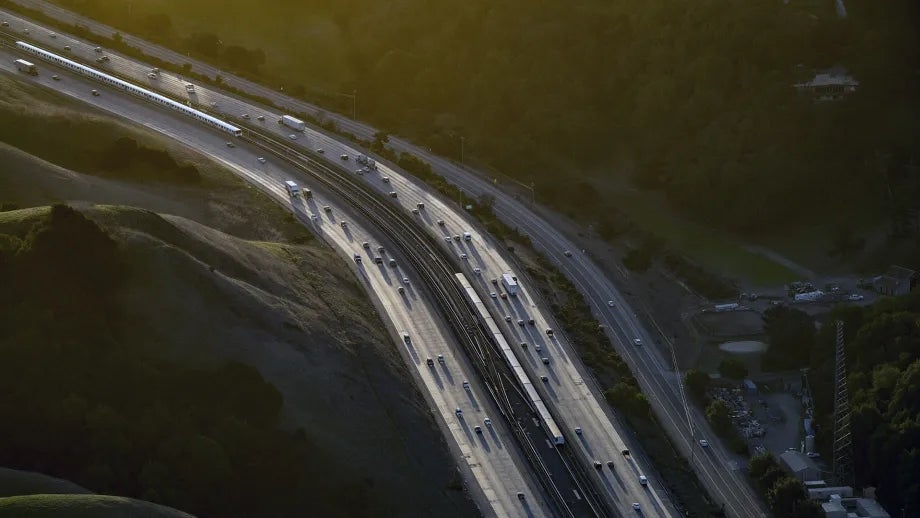Next Generation Bay Area Freeways Study
Among the hottest topics in Bay Area transportation is the future of the region's freeways. What benefits do we expect freeways to deliver in 2035 or beyond? What tradeoffs might we consider?
The Bay Area’s freeways are too congested — people and goods are stuck in traffic — creating problems for individuals, for communities, for the environment and the economy.
Launched in early 2022, the Next Generation Bay Area Freeways Study is analyzing the feasibility, costs, benefits and public support for tolling certain Bay Area freeways as a strategy for delivering reliably high-speed travel and reducing greenhouse gas emissions caused by passenger vehicles. The study is expected to conclude by summer 2024 with findings and recommendations.
Regardless of the study findings, MTC does not have authority to implement all-lane tolling on any Bay Area freeway. Establishment of such a policy would require changes to state law — legislation passed by the state Assembly and Senate and signed by the governor — as well as approvals by various federal agencies.
Step into the driver’s seat of policymakers and help MTC reimagine Bay Area freeways for the 21st century.

Learn how Bay Area freeway travel, transit and safety could be improved in 2035.

Areas of Focus
MTC invests in various programs and projects that help provide alternatives to driving on freeways. However, many people in the Bay Area need to drive — often alone — for a variety of reasons. The Next Generation Freeways Study is examining freeway corridors that are (or would be) served well by public transit, and seeks to determine if pricing would:
- Encourage drivers to travel during off-peak hours
- Encourage drivers to consolidate their trips and make their own driving routes more efficient
- Encourage drivers to choose alternate destinations, if possible
- Encourage drivers to take public transit or carpool instead of driving alone
The study also will seek answers to questions like:
- Who is using the freeway network now? And why are they driving alone?
- What are our shared goals for a next generation freeway network?
- Can new tolls be implemented in a way that is equitable for all people in the Bay Area?
- How could toll revenues be used to advance equitable outcomes?
- How do we make sure that new fees will not harm people with low incomes?
- How could transit improvements be implemented before tolls begin?
- Due to the jobs-housing imbalance, many people live far from where they work. Will freeway pricing burden them?
- What is the impact on local streets that are parallel to freeways?
Three Major Study Components
- Community engagement with the diverse communities of the Bay Area, as well as stakeholder engagement with government and non-governmental organizations
- Technical analysis using MTC’s travel model to evaluate the effectiveness of proposed pathways and their impacts
- Exploration of operational deployment, including the potential costs of implementing tolling
What are “Pathways?"
Pathways are defined as packages of pricing and complementary strategies that could help transform the Bay Area’s freeways. Pricing strategies cannot be one-size-fits-all and must work together with other policies and investments.
Complementary strategies could include:
- Exemptions and discounts
- Credits and rebates
- Transit improvements
- Local street and road improvements
- Walking and biking improvements
- Other mobility programs
Staff Contact
Anup Tapase, Next Generation Freeways Study Project Manager
Email: atapase@bayareametro.gov
September 2023 Staff Report to the Policy Advisory Council
June 2023 Staff Report to Joint MTC Planning Committee with the ABAG Administrative Committee
- Agenda (June 2023)
- Meeting Video Recording (June 2023)
- Memorandum (June 2023)
- Attachment A (June 2023)
- Attachment B (June 2023)
- Attachment C (June 2023)
- Attachment D (June 2023)
- Presentation (June 2023)
March 2023 Staff Report to Policy Advisory Council
- Agenda (March 2023)
- Meeting Video Recording (March 2023)
- Memorandum (March 2023)
- Attachment A (March 2023)
- Attachment B (March 2023)
- Attachment C (March 2023)
- Attachment D (March 2023)
- Presentation (March 2023)
October 2022 Staff Report to the Policy Advisory Council
- Agenda (October 2022)
- Meeting Video Recording (October 2022)
- Memorandum (October 2022)
- Presentation (October 2022)
May 2022 Staff Report to the Equity & Access Subcommittee
April 2022 Staff Report to the Policy Advisory Council
February 2022 Staff Report to Joint MTC Planning Committee with the ABAG Administrative Committee
Phase 1 & 2: Defining the Problem and Goals and Pathways Development
| Winter 2022 |
|
| Spring 2022 |
|
| Summer 2022 |
|
| Fall 2022 |
|
| Winter/Spring 2023 |
|
Phase 3 & 4: Refining Pathways and Planning for Next Steps
| Spring/Summer 2023 |
|
| Summer/Fall 2023 |
|
| Fall 2023 |
|
| Winter 2024 |
|
| Spring 2024 |
|
The Next Generation Bay Area Freeways Study is advised by a staff-level advisory group and an ad-hoc executive group that bring together diverse perspectives from non-governmental and governmental organizations.
The role of the advisory group is to:
- Help define policy
- Advise on equity and engagement
- Advise on technical inputs for analysis
- Collaboratively evaluate and develop recommendations
The role of the ad-hoc executive group is to provide strategic direction for the study and endorse staff and advisory group recommendations.
These groups bring together representatives from:
- Low-income communities and communities of color
- Business organizations
- Labor unions
- Freight
- Agriculture
- Non-profit
- Youth
- Academia
- Local and state agencies

